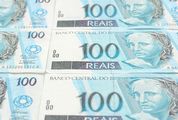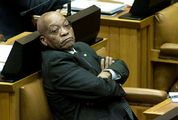Size gigantic sculpture exhibition’s strength and weakness
by Mary Corrigall,
2015-12-17 05:00:00.0
IF THERE ever were an opportunity to gauge our artists’s sculptural preoccupations the Everard Read’s gargantuan Bronze, Steel and Stone exhibition has been it. It is the biggest sculpture show Joburg, possibly SA, has yet witnessed. Some might argue it is too big … over 60 works are spread across the flagship Johannesburg gallery and the more contemporary Circa Gallery.
Everywhere you cast your gaze there is a sculpture; even the pavements around the galleries are overflowing with works. This is the strength and weakness of this show. The sense of abundance announces this massive rebirth of sculpture — a form that has been eclipsed by a fashionable revival in painting and has been limited by prohibitive costs to produce (apparently it is somewhat cheaper now).
The downside is that the show feels like it might have benefited from some editing, and is slightly crowded in places — I totally missed a Joni Brenner work that everyone was raving about. It is overwhelming to be confronted with so much art, which forces you to ask big questions.
Such as, who is making sculpture? White men mostly it appears. What holds the attention of South African sculptors, or those whose practice encompasses this art form? Well, for starters they don’t appear to be on quite the same fashionable tack as painters. Abstraction isn’t quite the mode du jour. There are a few works in the abstract mode involving twisting squares such as Rodan Kane Hart’s Shapes Rotated from Pattern Language and Andrzej Urbanski’s flattened and stretched black square that protrudes from a flat surface. It’s a pleasing work.
Largely, however, our sculptors appear to be more interested not only in nature, the environment, but life, death and humankind’s position in the whole scheme. The big questions that scientists and artists are brave enough to ask.
Many of these statues seem to rise from the earth, appearing like buried archeological artefacts and functioning as proof of long-lost cultures, communities, but also reinforcing humankind’s connection to the land, nature. We are of it and it is of us, is the message.
Angus Taylor’s Positive as Entangled, a bronze figure of a man with a granite stone balanced on his head, suggests that the two entitles (humankind and nature) are indivisible. Of course, we know that humankind challenges this relationship, and disrupts it.
This brings to mind the reports coming out of the COP21 climate change summit just concluded Paris, which highlights our increasing awareness of the impact of humankind on the environment and our inability to prevent or repair our incursions on nature. Dylan Lewis’s Spoor 4, which depicts animal footprints worn into a hard concrete-like surface, drives home the permanent traces that every action leaves.
Artists’s preoccupation with this push-pull relationship with nature and how it reveals the truth about humanity might have something to do with the "origin" of humankind being traced back to our neck of the woods, as with the discovery of Homo Naledi in the Cradle of Humankind, west of Johannesburg.
A 97-year-old fossil dubbed Ichthyosaurus (marine reptile-air-breathing carnivore) that is also part of the display sets the scene for this theme of archeological discovery. The outline of cave openings that Marcus Neustetter renders in steel tie in with this theme, presenting openings that lead into subterranean worlds where we believe the mysteries of the universe are contained. The opening could also provide a pathway back into the light, to the present.
Guy du Toit’s Beach Scene series, which shows partially embedded skulls and objects, evokes the archeological dig, but also the heightened sense of mortality that these sites present. These universal questions are probed more deeply by the late Neels Coetzee in untitled bronze skulls that have been ripped apart and twisted into quasi-abstract shapes as he attempts to penetrate the now-vacant space where the human mind is contained. Michael McGarry’s faux African grass dolls, unexpectedly titled Unit III and IV, initially appear like traditional African artefacts — it is only when you discover that they are made of drill bits used in the extraction of oil that they become objects that lead us into present-day conditions and the manner in which natural resources are being exploited for profit, drawing attention to the ways in which our relationship to the natural world has become a twisted one corrupted by a neocolonial capitalist drive. It serves as a reminder that humankind’s relationship to nature doesn’t just evoke the big existential questions but is politicised, the battle for power and dominance remains tied to the land.
• This is an independently produced text by Incorrigible Corrigall that has been subsidised by the gallery. The gallery has no editorial say.
• Bronze, Steel, Stone is showing at the Everard Read and Circa Galleries in Jellicoe Ave, Rosebank, Johannesburg until January 16.
Visitors to the Everard Read's Bronze, Steel, Stone exhibition wander about the Circa gallery. Pauline Gutter's striking red "Purgatorium" is in the foreground. Picture: EVERARD READ GALLERY
IF THERE ever were an opportunity to gauge our artists’s sculptural preoccupations the Everard Read’s gargantuan Bronze, Steel and Stone exhibition has been it. It is the biggest sculpture show Joburg, possibly SA, has yet witnessed. Some might argue it is too big … over 60 works are spread across the flagship Johannesburg gallery and the more contemporary Circa Gallery.
Everywhere you cast your gaze there is a sculpture; even the pavements around the galleries are overflowing with works. This is the strength and weakness of this show. The sense of abundance announces this massive rebirth of sculpture — a form that has been eclipsed by a fashionable revival in painting and has been limited by prohibitive costs to produce (apparently it is somewhat cheaper now).
The downside is that the show feels like it might have benefited from some editing, and is slightly crowded in places — I totally missed a Joni Brenner work that everyone was raving about. It is overwhelming to be confronted with so much art, which forces you to ask big questions.
Such as, who is making sculpture? White men mostly it appears. What holds the attention of South African sculptors, or those whose practice encompasses this art form? Well, for starters they don’t appear to be on quite the same fashionable tack as painters. Abstraction isn’t quite the mode du jour. There are a few works in the abstract mode involving twisting squares such as Rodan Kane Hart’s Shapes Rotated from Pattern Language and Andrzej Urbanski’s flattened and stretched black square that protrudes from a flat surface. It’s a pleasing work.
Largely, however, our sculptors appear to be more interested not only in nature, the environment, but life, death and humankind’s position in the whole scheme. The big questions that scientists and artists are brave enough to ask.
Many of these statues seem to rise from the earth, appearing like buried archeological artefacts and functioning as proof of long-lost cultures, communities, but also reinforcing humankind’s connection to the land, nature. We are of it and it is of us, is the message.
Angus Taylor’s Positive as Entangled, a bronze figure of a man with a granite stone balanced on his head, suggests that the two entitles (humankind and nature) are indivisible. Of course, we know that humankind challenges this relationship, and disrupts it.
This brings to mind the reports coming out of the COP21 climate change summit just concluded Paris, which highlights our increasing awareness of the impact of humankind on the environment and our inability to prevent or repair our incursions on nature. Dylan Lewis’s Spoor 4, which depicts animal footprints worn into a hard concrete-like surface, drives home the permanent traces that every action leaves.
Artists’s preoccupation with this push-pull relationship with nature and how it reveals the truth about humanity might have something to do with the "origin" of humankind being traced back to our neck of the woods, as with the discovery of Homo Naledi in the Cradle of Humankind, west of Johannesburg.
A 97-year-old fossil dubbed Ichthyosaurus (marine reptile-air-breathing carnivore) that is also part of the display sets the scene for this theme of archeological discovery. The outline of cave openings that Marcus Neustetter renders in steel tie in with this theme, presenting openings that lead into subterranean worlds where we believe the mysteries of the universe are contained. The opening could also provide a pathway back into the light, to the present.
Guy du Toit’s Beach Scene series, which shows partially embedded skulls and objects, evokes the archeological dig, but also the heightened sense of mortality that these sites present. These universal questions are probed more deeply by the late Neels Coetzee in untitled bronze skulls that have been ripped apart and twisted into quasi-abstract shapes as he attempts to penetrate the now-vacant space where the human mind is contained. Michael McGarry’s faux African grass dolls, unexpectedly titled Unit III and IV, initially appear like traditional African artefacts — it is only when you discover that they are made of drill bits used in the extraction of oil that they become objects that lead us into present-day conditions and the manner in which natural resources are being exploited for profit, drawing attention to the ways in which our relationship to the natural world has become a twisted one corrupted by a neocolonial capitalist drive. It serves as a reminder that humankind’s relationship to nature doesn’t just evoke the big existential questions but is politicised, the battle for power and dominance remains tied to the land.
• This is an independently produced text by Incorrigible Corrigall that has been subsidised by the gallery. The gallery has no editorial say.
• Bronze, Steel, Stone is showing at the Everard Read and Circa Galleries in Jellicoe Ave, Rosebank, Johannesburg until January 16.



















Change: -1.99%
Change: -2.11%
Change: -1.89%
Change: -2.48%
Change: 0.28%
Data supplied by Profile Data
Change: -0.76%
Change: -1.34%
Change: -1.99%
Change: 0.00%
Change: -0.91%
Data supplied by Profile Data
Change: -1.04%
Change: -1.20%
Change: -1.10%
Change: -0.24%
Change: -0.11%
Data supplied by Profile Data
Change: 1.43%
Change: 2.09%
Change: 2.99%
Change: 0.47%
Change: 1.68%
Data supplied by Profile Data